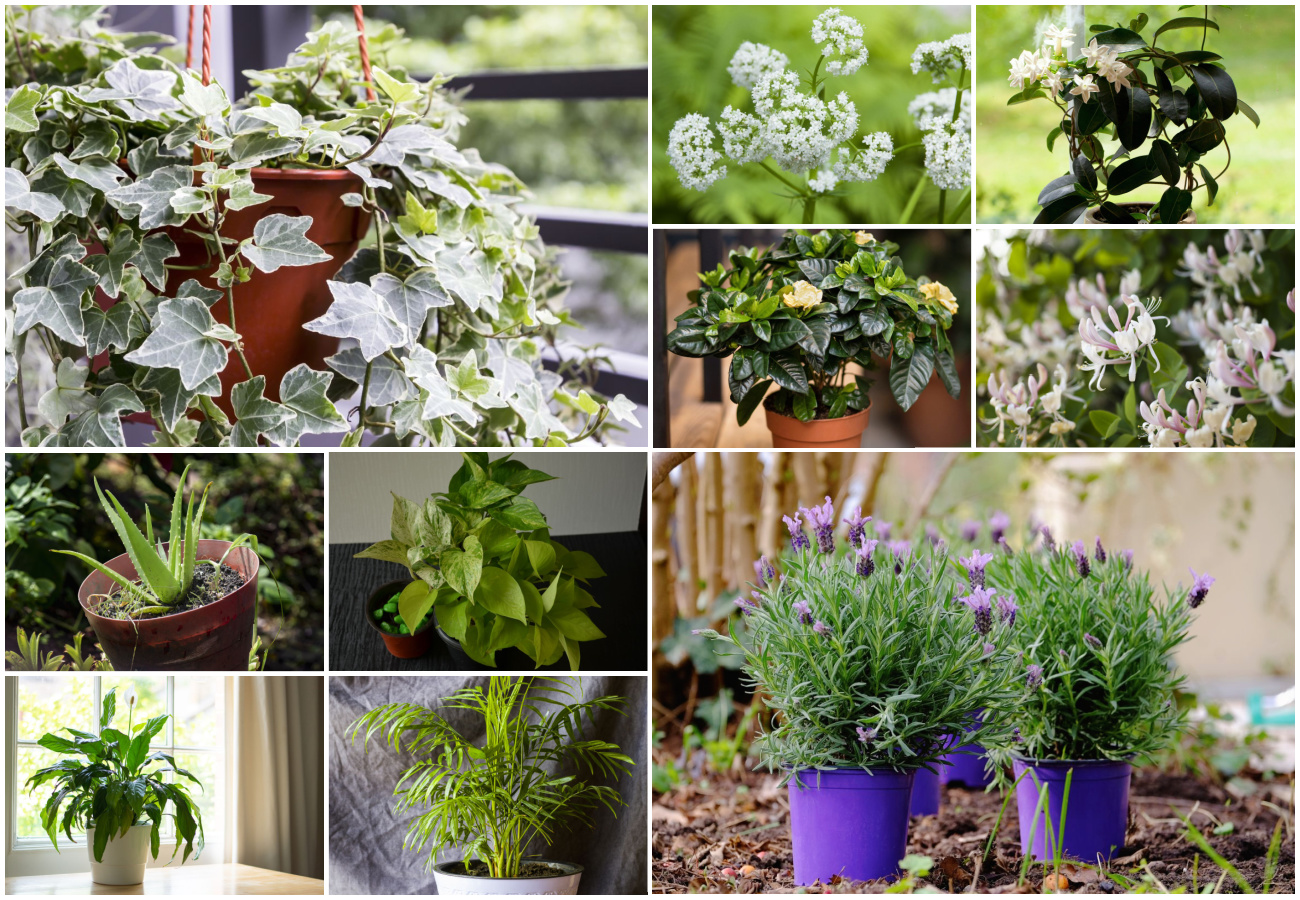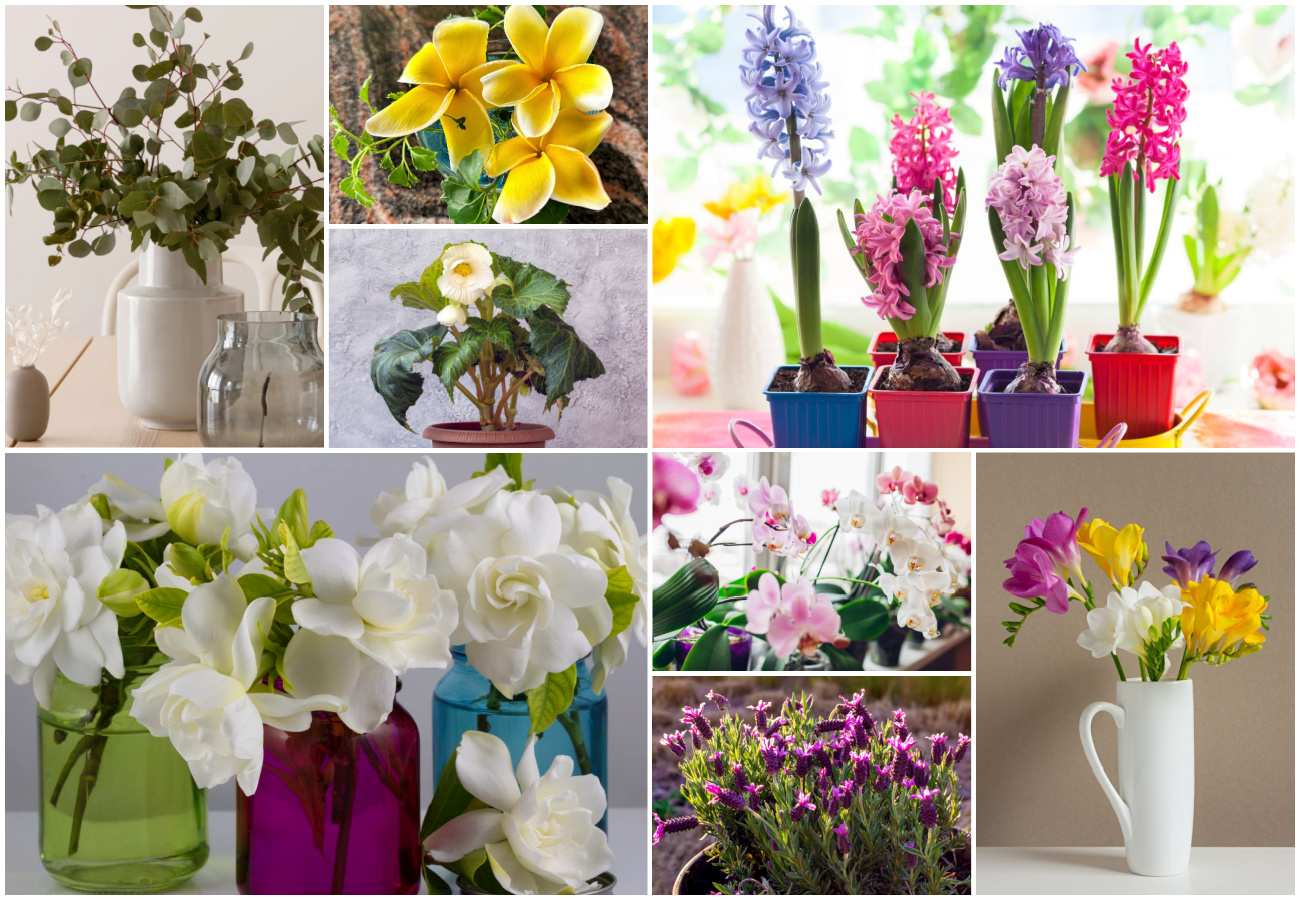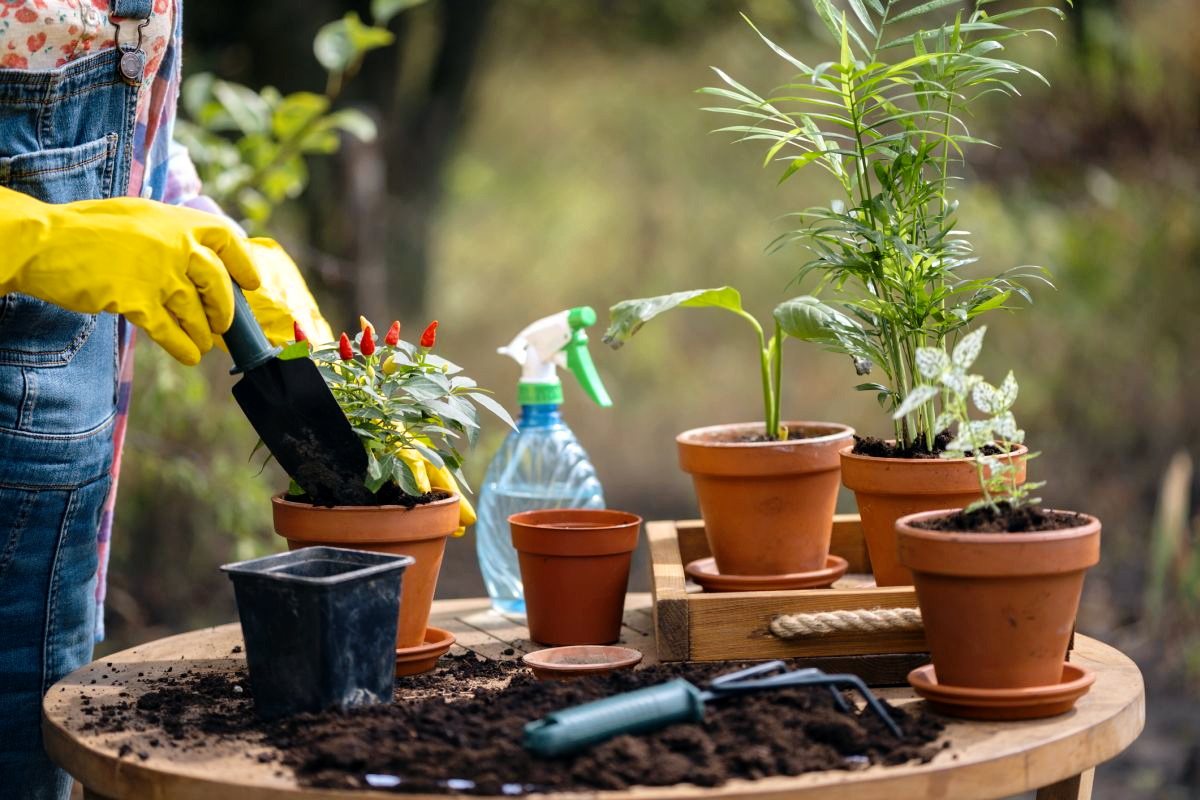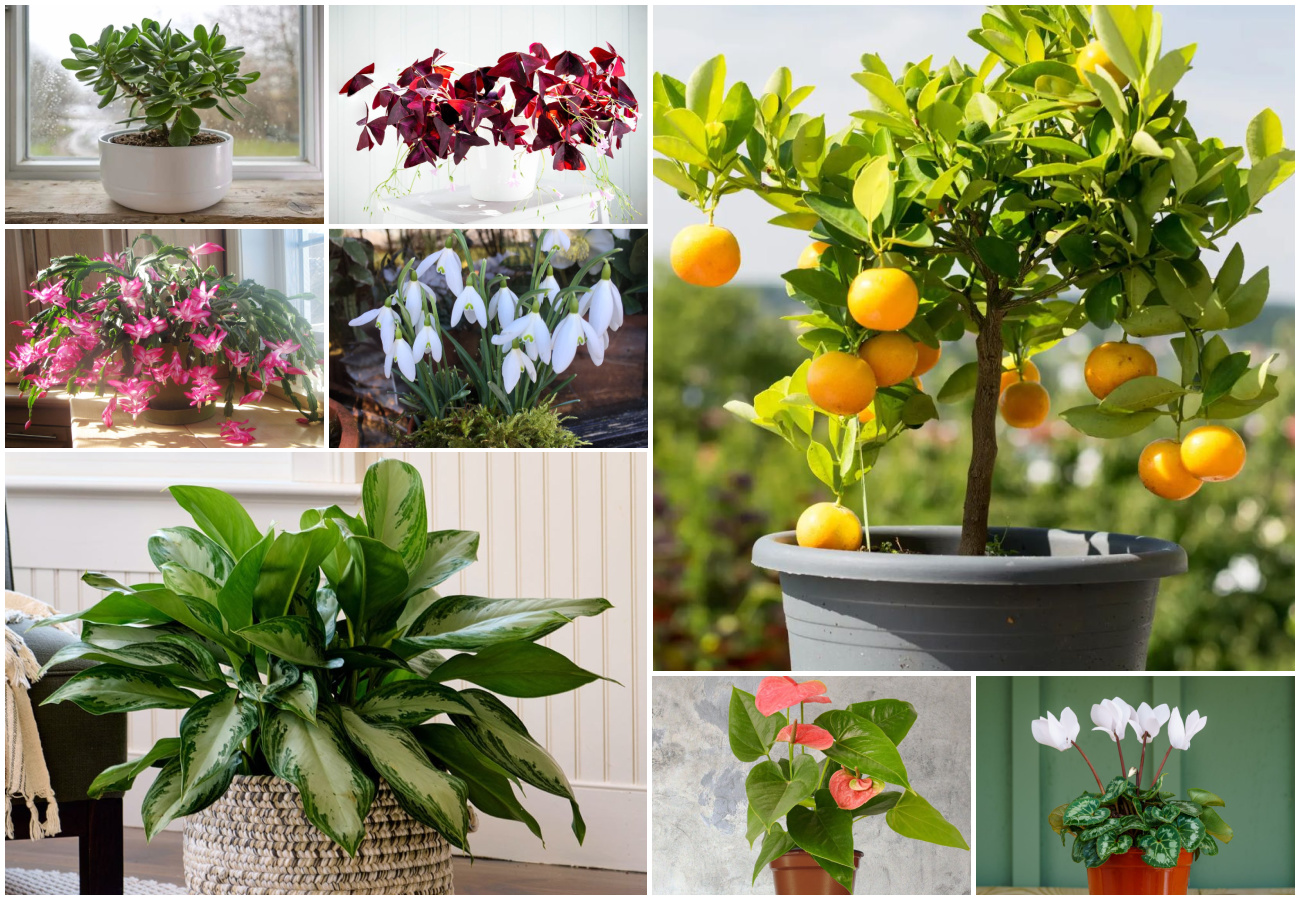Low-water plants are an excellent choice for beginner houseplant enthusiasts or busy people who want to avoid high-maintenance plants.
There is a wide variety of plants to choose from. You don’t have to worry about being limited with your selection just because you’re in search of plants that don’t need much water.
While some of these plants are more drought tolerant than others, all of them still need some water to thrive.
The key to caring for low-water plants is to find a schedule that works for that particular plant and keep to it. If you still find it difficult to keep up with the watering, consider investing in self-watering pots.
Drought Tolerant Plants
The Sago Palm
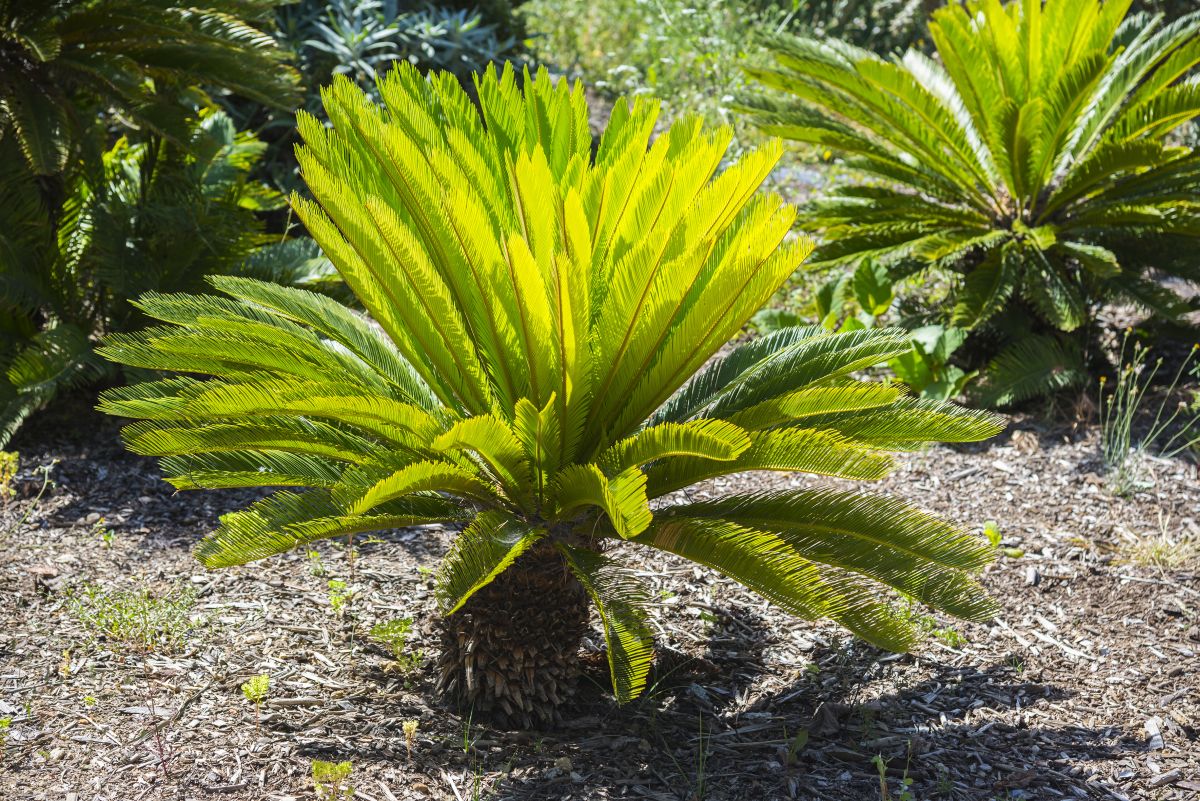
The Sago palm is a perennial shrub that grows from a single, thick trunk. The foliage is featuthy and forms a ring from the stalk. This low water plant grows to a height and width of 2 to 3 feet (61 cm to 0.9 meters) once it reaches maturity. The Sago plant does not bloom, but does produce nuts.
As far as plants that don’t need much water, the Sago Palm needs only moderate watering to thrive. Water the plant when the top 2 inches of the soil feels dry when a finger is inserted. Water until the soil is evenly moist but never soggy. During the winter, reduce watering to just enough to keep the plant hydrated and avoid damage.
To aid with proper watering, grow the Sago Palm in a well-draining soil with some organic matter added for nutrients. A cactus or palm soil amended with some compost works well. Feed the plant once per month from spring to fall with a liquid 18-8-18 NPK fertilizer. As an alternative, use a slow-release fertilizer 2 or 3 times during the growing season. Always water the plant first to avoid burning the roots, and withhold feedings in the winter.
Snake Plant

The Snake Plant is a popular house plant and very easy to grow. This drought tolerant plant grows to a height of between 6 to 8 feet (1.8 to 2.4 meters) tall. The color of the foliage varies, but many varieties feature green leaves with a yellow border. This low water plant grows slowly indoors and rarely blooms as a houseplant.
Allow the top few inches of soil to dry between waterings. It is better to underwater the Snake Plant than overwater it and have the plant sit in soggy soil. During the winter months, water the plant no more than once a month. This plant prefers warm temperatures between 70 and 90 Fahrenheit (21 to 32 Celius) but is not frost tolerant so avoid temperatures below 50 F (10 C).
A well-draining potting soil amended with sand or a cactus soil is recommended. When you water your Snake Plant, the water should run through fast and never pool up on the soil’s surface. Use a balanced, liquid fertilizer, such as a 10-10-10 NPK during the spring through fall. Withhold feedings in the winter when the plant goes dormant.
The Spider Plant

The Spider Plant prefers warm and humid conditions, but is known for being adaptable to most household conditions. The leaves are long, slender, and are either green or green with white variegation. Mature plants send out woody stems that produce small, white flowers growing in clusters at the end of the stems. Once the flowers die off, a new plantlet will form in their place.
The Spider Plant’s fleshy tubers store water, making it a drought tolerant plant. Aim to keep the soil moist, but some inconsistency in the watering schedule won’t harm the plant. Avoid over watering, resulting in soggy soil, as this low water plant is susceptible to root rot. Water until the moisture runs through the pot drainage holes, then stop.
Provide a loamy soil with fast drainage which helps avoid soggy soil. Feeding is recommended once per month in the spring and summer. Use a water-soluble fertilizer as directed. Brown tips on the foliage indicate too much fertilizer, while slow growth signals the plant needs more fertilizer. Water your plant before giving fertilizer to avoid root burn.
The ZZ Plant

As far as plants that don’t need much water, you can’t get an easier-care plant than the ZZ plant. Considered almost impossible to kill, this low-maintenance plant is a must for any houseplant collection. The foliage is oval and shiny, almost giving the appearance of an artificial plant. Mature plants grow to a height of between 2 and 4 feet (61 cm to 1.2 meters). Blooms appear in spring.
Water this low water plant once the top 3 inches of soil feels dry from spring to fall. Water until the soil is moist, and run through the pots drainage holes. The soil should never be soggy or the plant’s rhizomes may suffer rot. Yellow or dropping leaves is often a first indicator of too much water. In the winter, watering once or twice a month is sufficient
A standard potting soil is fine for the ZZ Plant, as long as it is well-draining. A cacti or succulent fertilizer low in nitrogen is recommended. Feed the plant once every 2 to 3 weeks from early spring to the beginning of fall.
The Devil’s Backbone
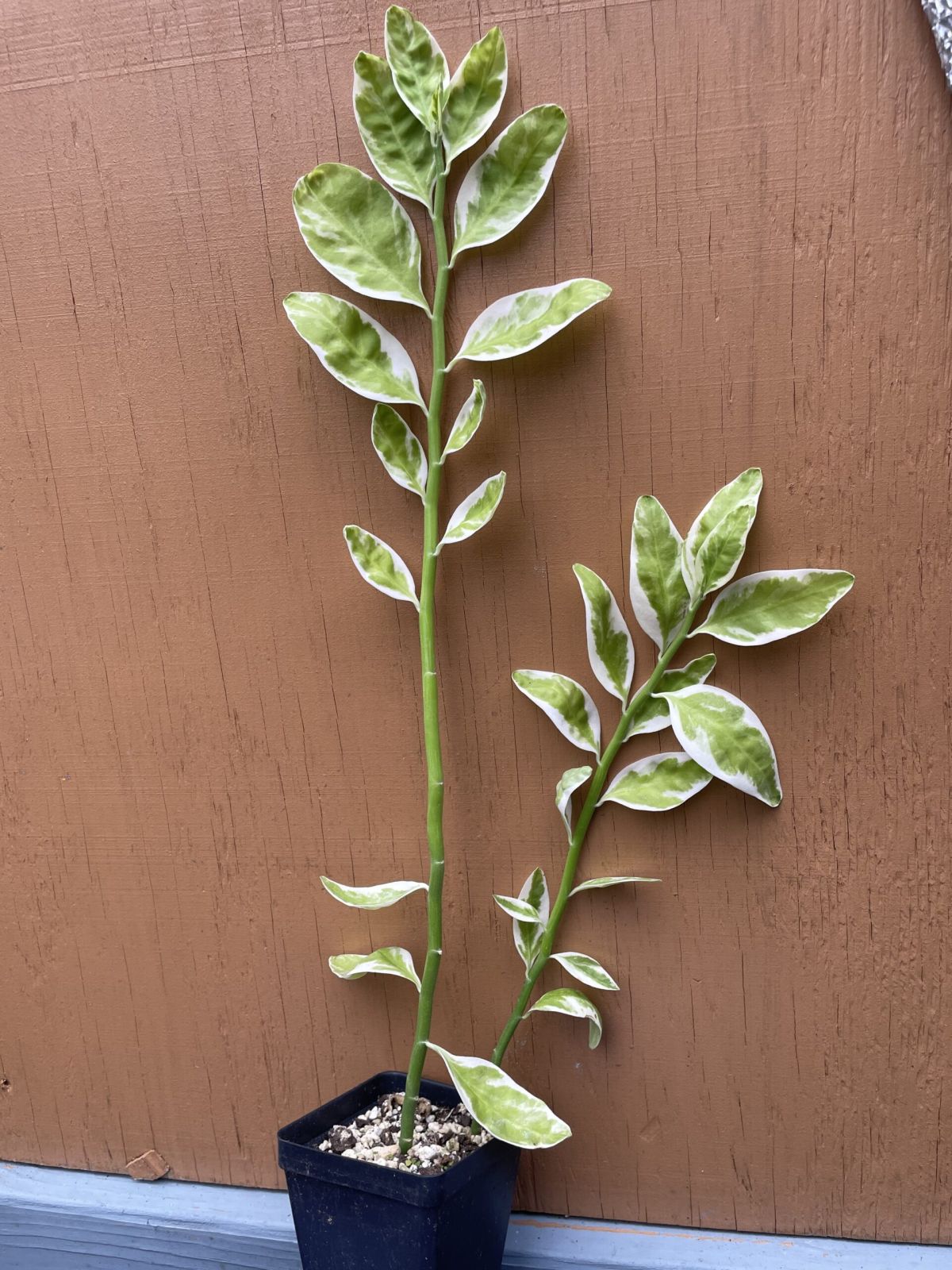
Also known as the ZigZag Plant, this is a popular indoor plant for its unique appearance. A slow-growing plant, the leaves are variegated with green and white, taking on a pink tint once the temperatures rise. Once mature, the plant reaches between 2 to 3 feet (61 cm to 0.9 meters) tall. The blooms are actually leaf brackets that produce no fragrance. The brackets appear in summer and can be green or white, but the prized colors are red and bright pink.
The drought-tolerant Devil’s Backbone does not do well with soggy soil. Water when the soil feels dry, then water until the soil is thoroughly moist. The plant will survive for extended periods of time without water, but leaf drop is a sign the plant has reached its limit and needs water. If your home has low humidity, regular misting will help the plant remain healthy.
Grow your plant in potting soil amended with vermiculite, peat moss, and sand for organic matter and drainage. Watering plants in pots is easier when you use an unglazed terracotta or clay pot to allow for wicking of excess water in the soil. Give the plant its first feeding in the early spring, then feed once every 3 weeks until early fall. In fall and winter stop feeding altogether.
Pothos
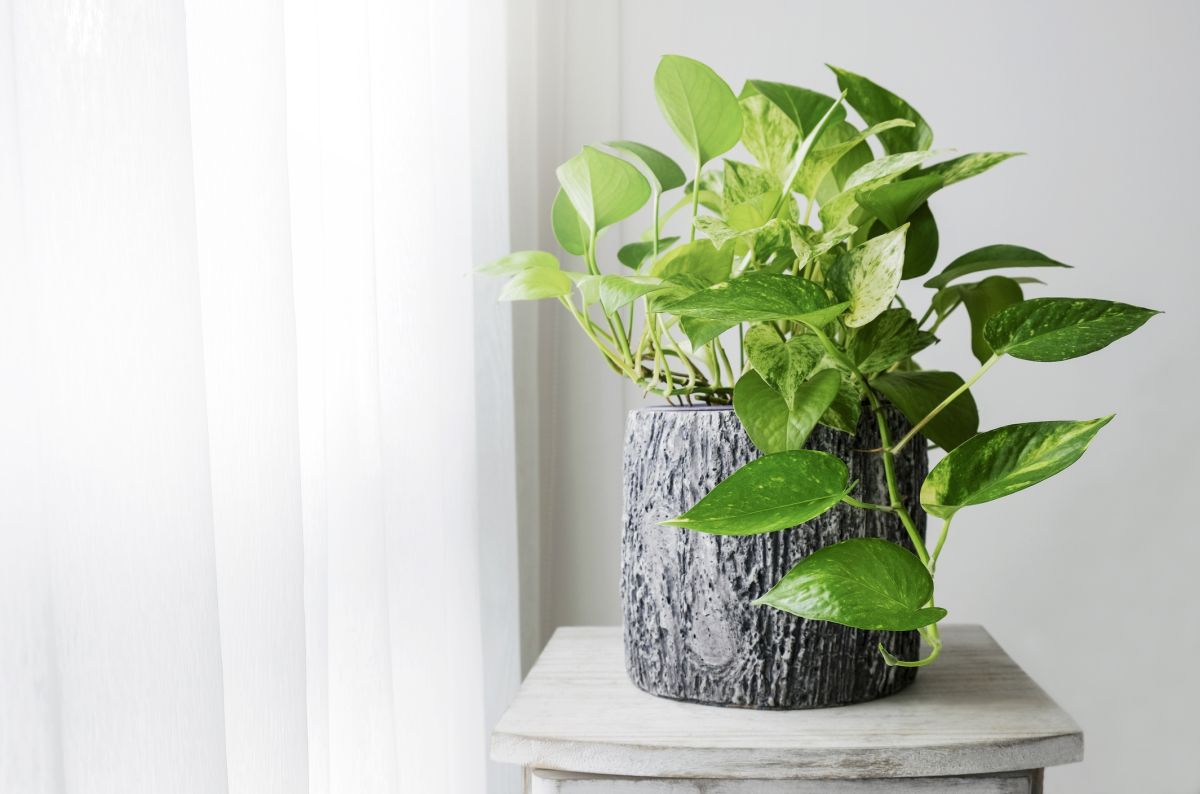
The Pothos Plant is both drought tolerant and easy to care for. The plant is forgiving if you forget to water it on occasion. The Pothos has a vining growth habit with heart-shaped leaves of green with white variegation or yellow with pale-green. Place a trellis in the plant’s pot, and attach the stems, if you’re growing the plant upright. Growing Pothos in a hanging basket works well, too. While blooming indoors is rare, the flowers of the plant are a goldish-yellow or purple when they appear.
This low water plant lets you know when it needs water. The soil should feel dry and the leaves droop a little before watering. Shriveled leaves or browning edges indicates the plant has gone too long without water. When watering plants in pots, pour until the moisture runs through the pot’s drainage holes, then dispose of collected water in the tray. Black spots on the leaves is an indicator of too much water.
Grow your plant in regular potting soil amended with some small gravel for drainage. Keep your plant in temperatures between 65 to 75 Fahrenheit (18.3 to 23.8 Celsius) for optimal growth. While the Pothos plant is a fast grower, it only requires a balanced liquid fertilizer once every two months.
The Corn Plant
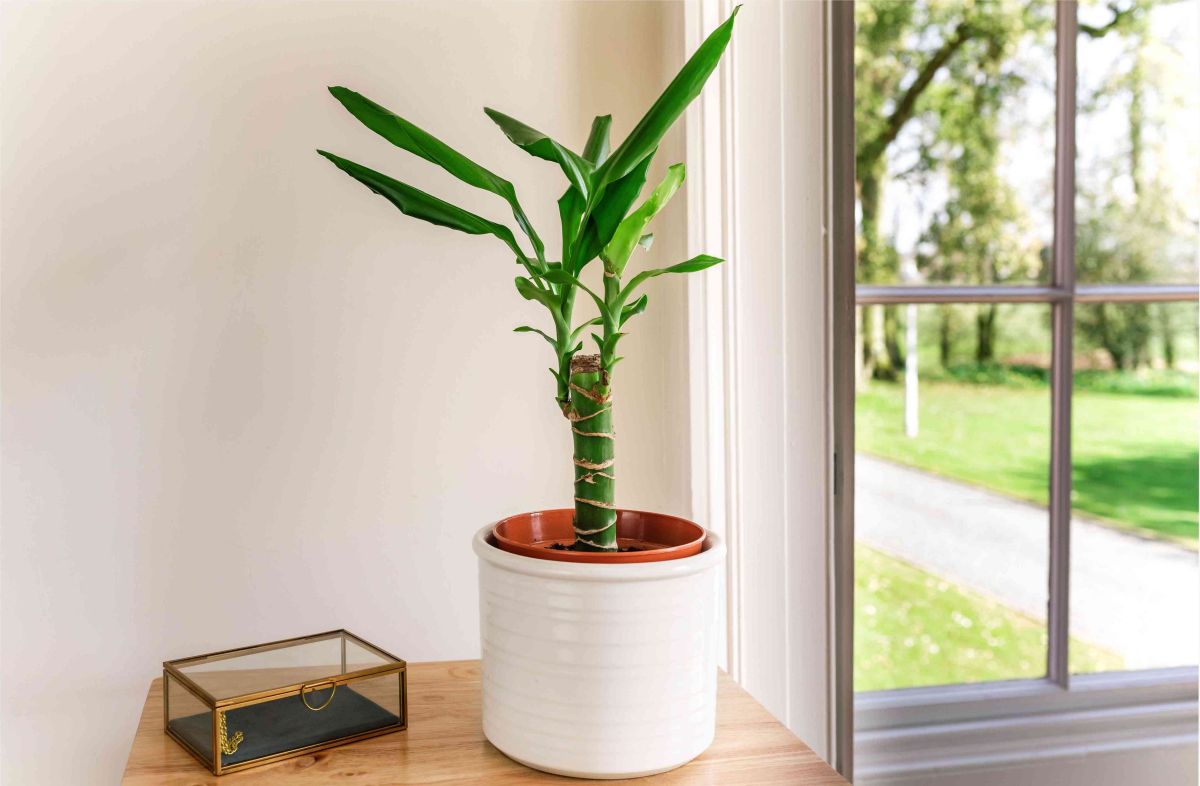
The drought tolerant Corn Plant is a tropical evergreen. The slow-growing plant produces thick stems with foliage of long, narrow leaves resembling corn. A mature plant will grow 4 to 6 feet (1.2 to 1.8 meters) tall. The plant blooms at night in the late spring and fall with white or yellow flowers.
Starting in spring, and continuing through to fall, water the plant when the top 2 inches of soil feels dry. Don’t let the soil dry out completely but also don’t allow the soil to become soggy as it promotes rot. Reduce watering beginning in fall and throughout the winter when the plant’s growth slows.
A loose and loamy potting soil with good drainage is recommended. Temperatures between 60 and 75 Fahrenheit ( 15.5 to 23.8 Celsius) are recommended. Avoid exposing the plant to temperatures below 50 F (10 C) as it may damage the plant. For feedings, use a balanced, liquid fertilizer once every two months from spring to fall, withholding any fertilizer during the winter.
The Panda Plant
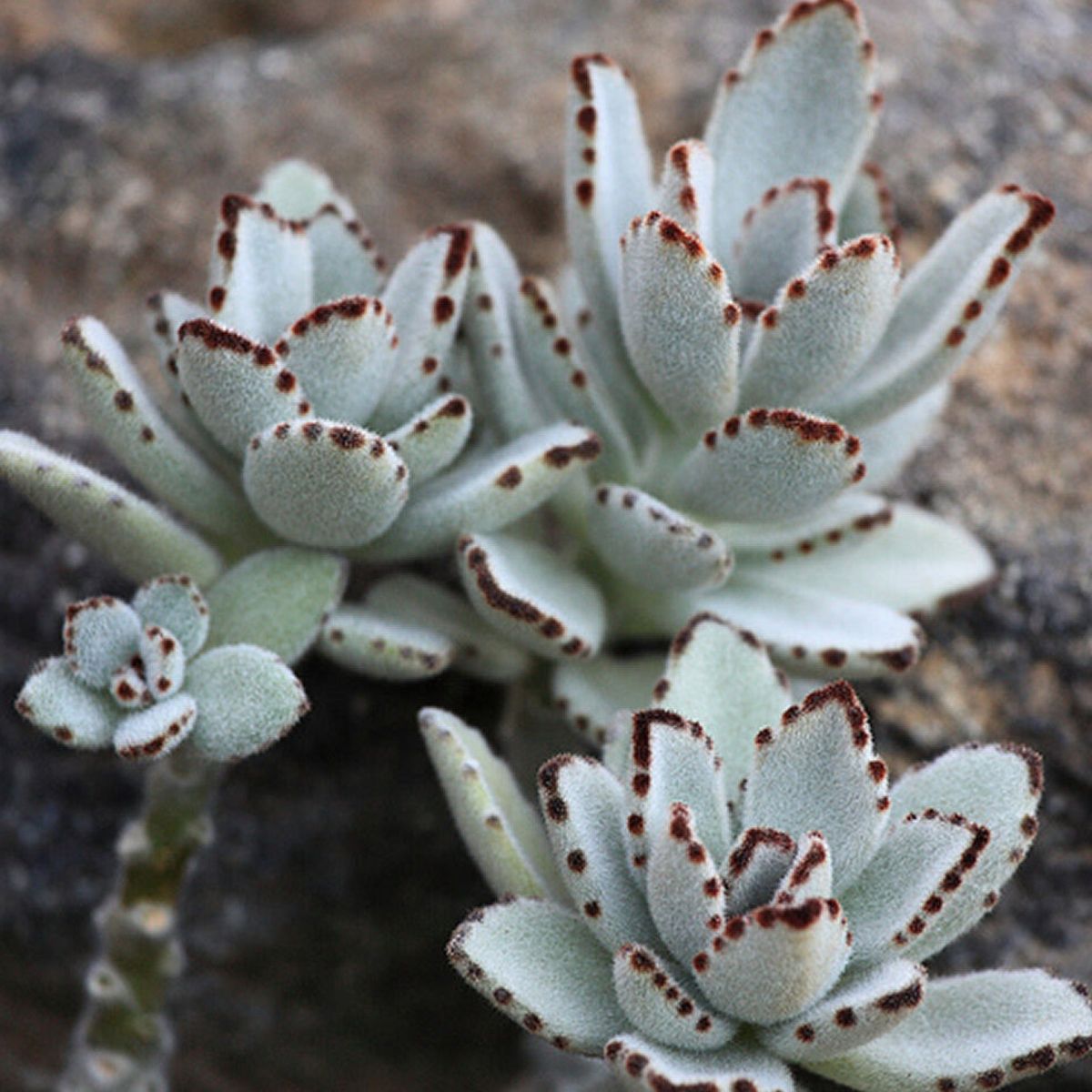
A perennial succulent, the Panda Plant is an easy-care plant with a unique texture. Also known as Chocolate Soldiers, the fuzzy foliage is gray-green with chocolate-brown edges. Featuring a woody base, the plant grows 2 feet (61 cm) tall and wide. It is unlikely the plant will bloom indoors.
This drought tolerant plant stores water, as most succulents do, reducing its need for moisture. Water only when the soil feels dry, until the moisture runs through the pot’s drainage holes. Let the soil drain for a few minutes, then dispose of the collected water in the drip tray to ensure the roots don’t sit in soggy soil.
A succulent or cactus soil mix is recommended and provides enough drainage to keep the roots healthy. Average household humidity and temperatures between 60 and 75 Fahrenheit (15.5 to 23.8 Celsius) are what this low water plant prefers. Feed your plant once per month with a liquid fertilizer diluted to half strength. Repeat this schedule starting in early spring to the end of summer. Withhold all feedings during fall and winter.
Cast Iron Plant
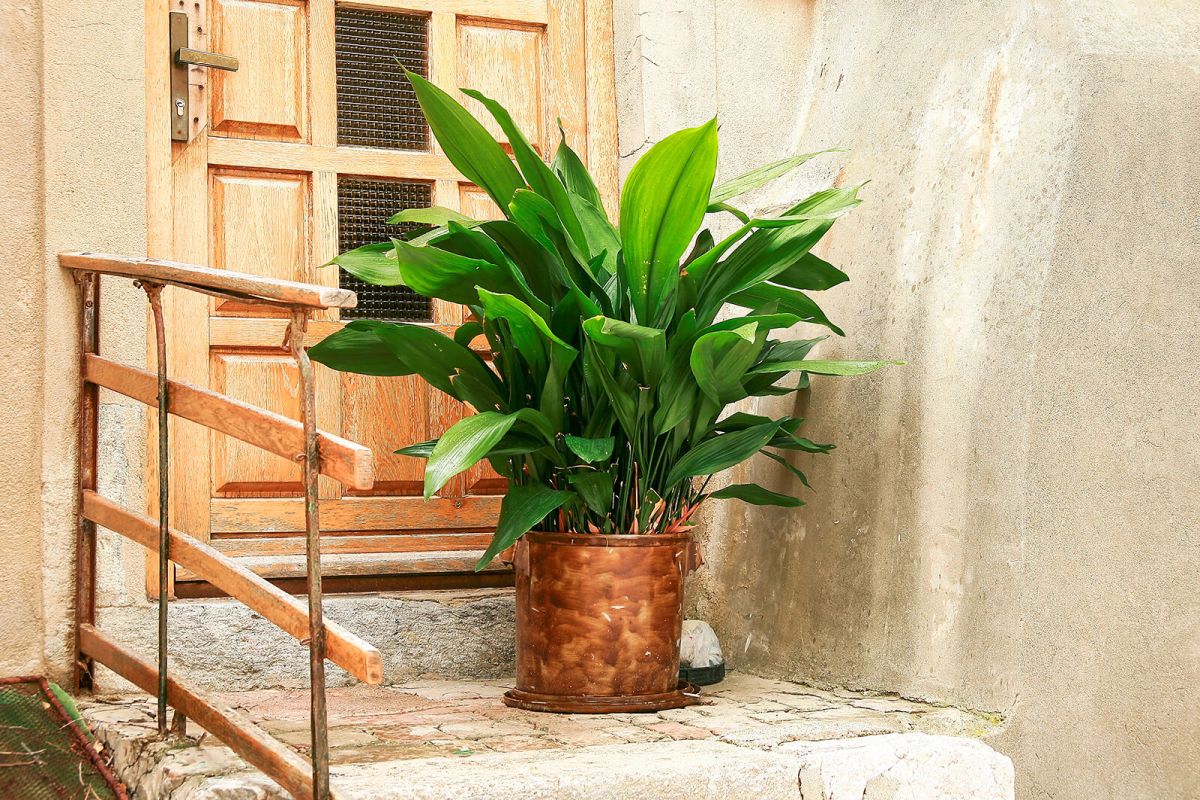
The Cast Iron Plant is a drought tolerant plant that is fine with some neglect. The plant’s beautiful foliage features deep-green, glossy leaves with a lance-like shape. Each leaf grows up to 2 feet (61 cm) long and 4 inches (10 cm) wide. The Cast Iron Plant, as a whole, will grow 2 to 3 feet (61 cm to 0.9 meters) tall and 1 to 2 feet (30 cm to 61 cm) wide. Flowering indoors is rare but if grown outdoors, small, cream blooms appear in spring and summer.
The watering schedule for the Cast Iron Plant depends on its age. Young plants prefer regular watering to keep the soil moist, but not soggy. Once the plant is mature, let the soil’s top 2 to 3 inches dry out between watering. When a finger is inserted into the soil, you should not feel any moisture. Water deeply, ensuring the moisture runs through the pot’s drainage holes. Any collected water in the drip tray needs to be disposed of for root health.
Your Cast Iron Plant grows well in a potting soil with some compost or peat moss added for nutrients. Ensure the mix is balanced so the soil is still well-draining. To fertilize your plant, water first to prevent root or foliage burn. Use a liquid fertilizer, once per month, during the spring and summer. The plant does not require fertilizer during the fall and winter.
Living Stones
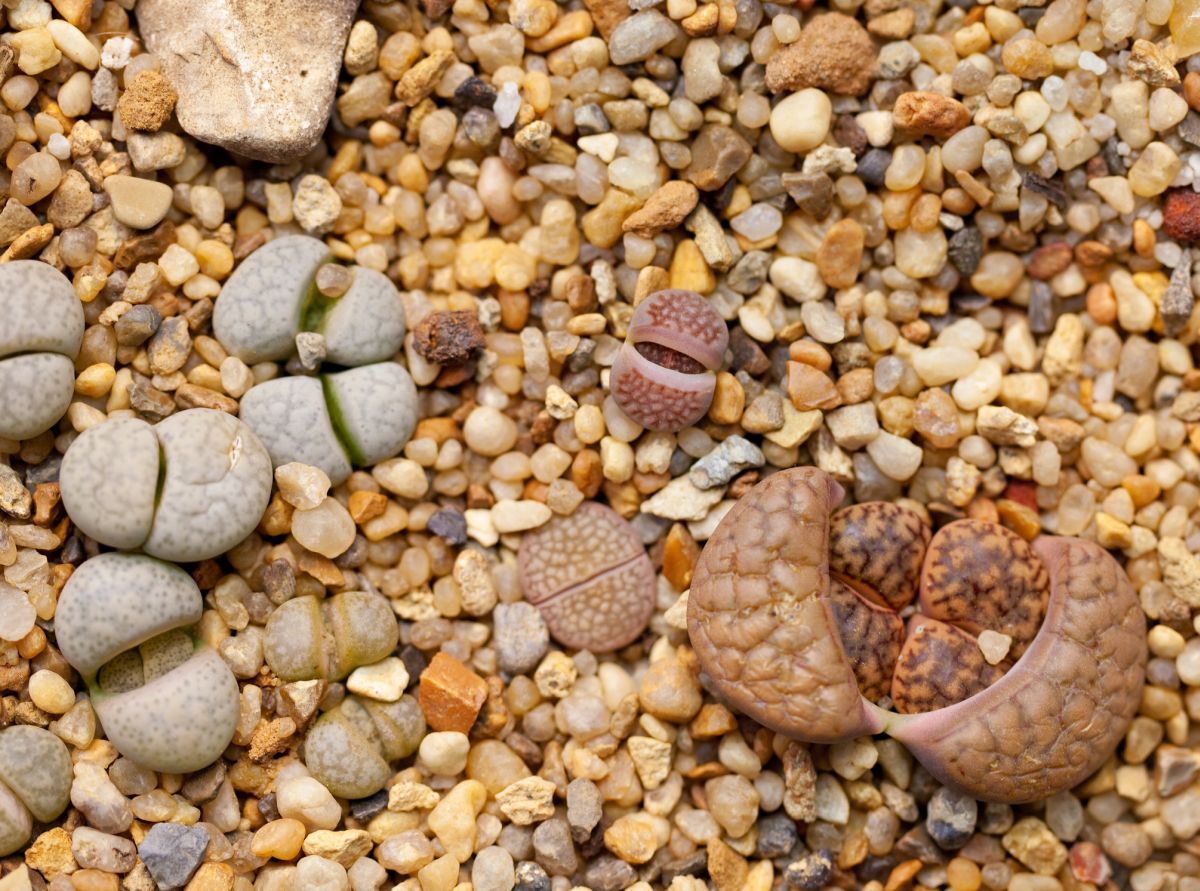
It’s hard to find a more unique-looking plant than Living Stones. These succulent plants look like large pebbles sitting on top of the soil. The plants go dormant in the hot summer and the cooler, winter months. Below the soil’s surface, the plants grow one stem and a long root system. The low-growing, low water plants only grow ½ to 2 inches ( 1.2 to 5 cm) tall and wide. The blooms, which look like daisies, appear in fall and early winter. The flowers are either white, yellow, or orange.
To recreate the plant’s natural environment, withhold water during the dormant summer and winter months. In early spring, soak the soil thoroughly for the first watering. After the initial soaking, let the top of the soil dry between and water once every one to two weeks. Withhold water once the heat of summer arrives. In the fall, repeat the initial soaking and then follow up with regular waterings every one to two weeks.
Grow Living Stones in a cactus soil that provides the needed drainage. The pot you choose needs drainage holes to allow excess water to escape. The plant is a light feeder, requiring a low-nitrogen/ high potassium fertilizer. To encourage blooms, feed during spring and fall, withholding during the dormant summer and winter months.
Jessenia Pothos
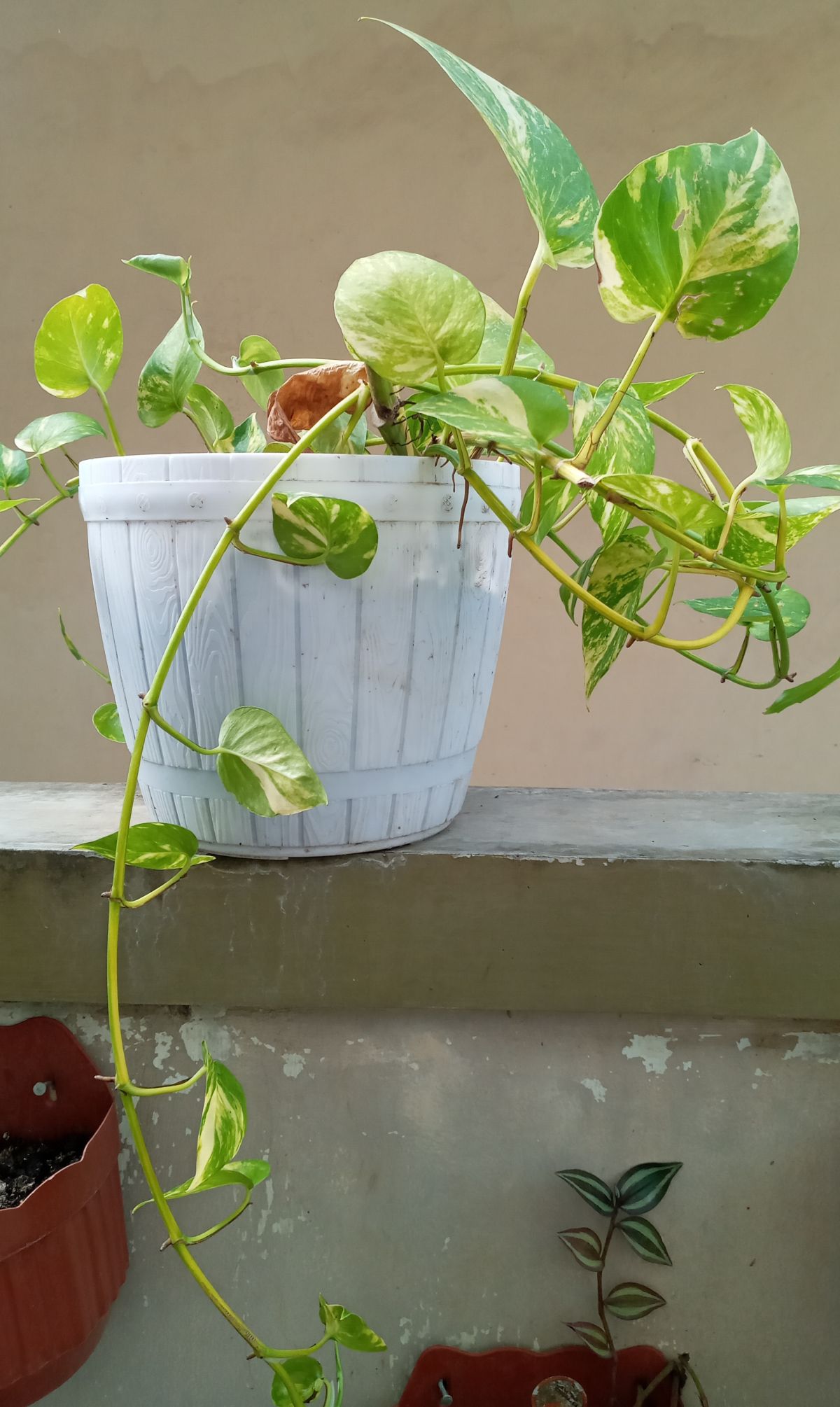
This Pothos variety is a perennial plant with a vining growth habit. The plant is great for hanging baskets or a pot with a trellis for support. The heart-shaped leaves are two-toned green with bright, chartreuse markings. When grown indoors, the Jessenia Pothos will grow 10 feet (3 meters) long. In the spring and summer, blooms of green or white appear.
This drought-tolerant plant will survive a few missed waterings but prefers regular water when the top 2 to 3 inches of soil becomes dry. Water until the soil is evenly moist down to the bottom of the pot. Follow this routine throughout the spring and summer, but reduce the frequency during the fall and winter dormancy.
Just as with many plants that don’t need much water, the Jessenia Pothos prefers a soil mix that’s not heavy but still retains some moisture. A potting soil amended with perlite and orchid bark gives a good balance. During spring and summer, feed your plant once per month with a balanced, liquid fertilizer. Withhold all feedings during the fall and winter.
Tillandsia Ionantha
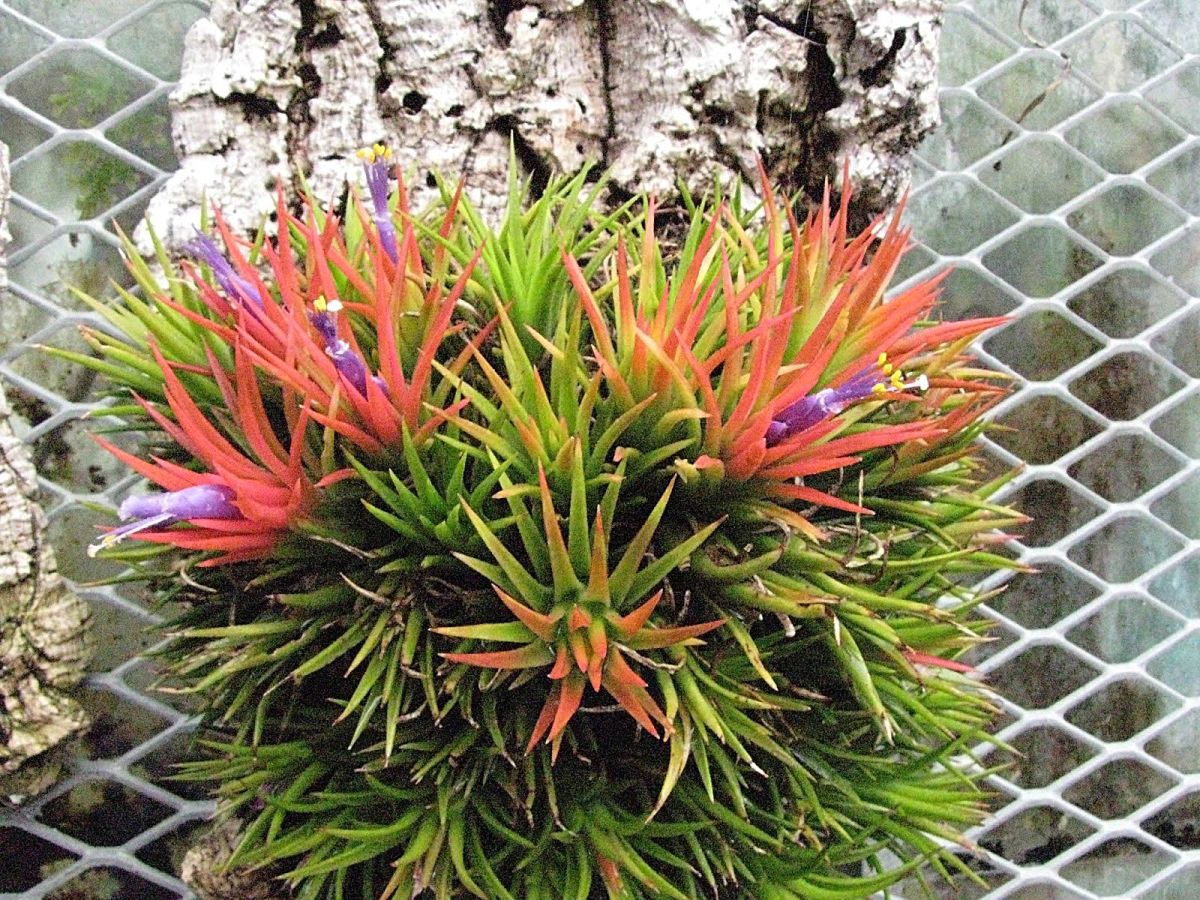
From the group of plants known as air plants, the Sky Plant needs no soil and very little water to thrive. This is a very adaptable plant that grows by either being mounted or in a small terrarium. This low water plant starts out small as a cluster of grayish-green leaves. The thin leaves grow longer as the plant matures, with the color deepening through time. Air Plants only bloom once, any time of the year, then die. The flowers are either white or yellow, emerging from a purple shoot.
While all air plants do well with little water, the Sky Plant’s moisture needs are even less than most. Water is given by misting the plant 2 to 3 times per week, or more if the environment is dry. As an alternative to misting, hold the plant under a slow trickle of water for a few seconds, then turn the plant upside down to drain excess water. Allow the plant to dry out for a while before repositioning back in its regular spot.
This drought tolerant plant needs no soil to grow, only a safe place to sit and grow in indirect or filtered sunlight. Once or twice a month, feed your air plant with a fertilizer designed specifically for air plants. As an alternative, add fish emulsion fertilizer to the misting bottle.
Medusa Air Plant
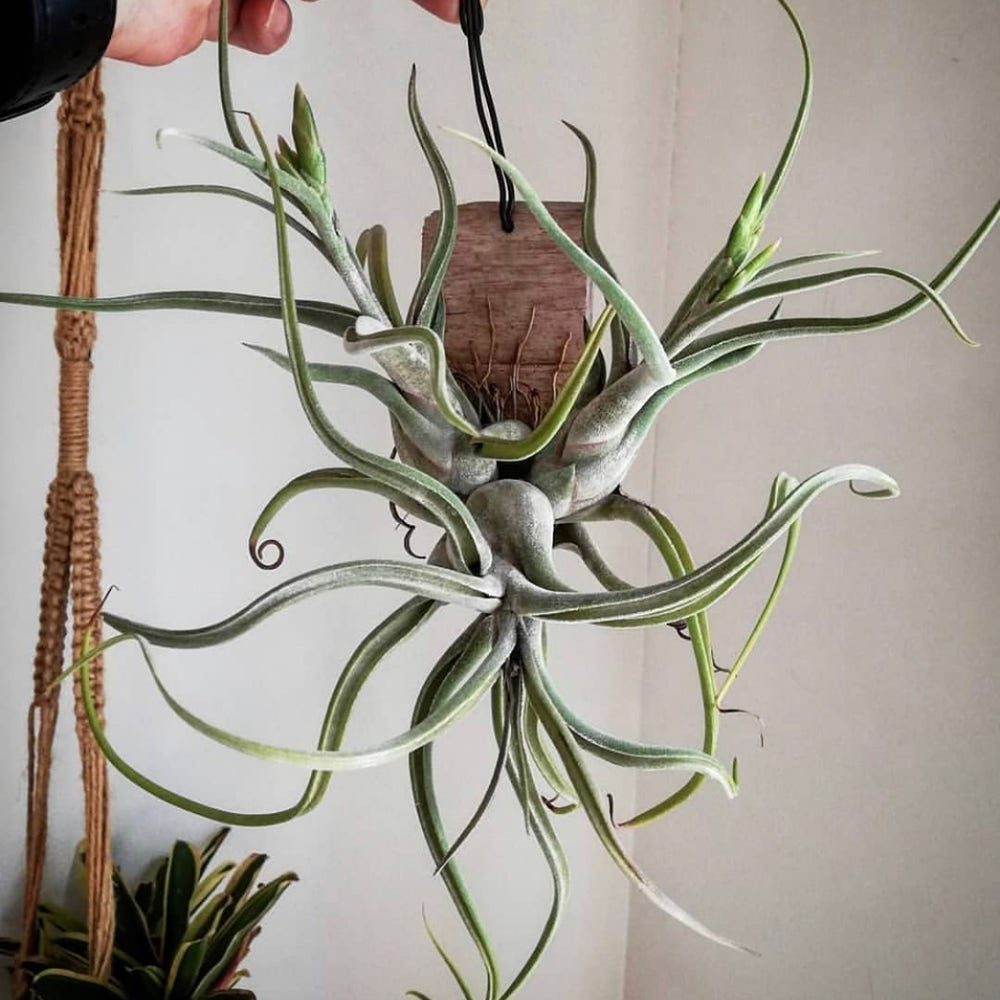
As with the Sky Plant, the Medusa Air Plant requires no soil to grow. The leaves are silver-green, with a purple base, and grow in a pattern that looks like snakes–hence the Medusa name. The plant will grow to 6 inches (15 cm) tall and will grow upright even when mounted horizontally. Blooms can appear any time of the year, growing from the center of the plant. The flowers can be purple or white with the center leaves taking on a pink tint.
Misting is the best way to water these drought-tolerant plants. Let the plant dry out between misting and base the frequency on how warm and humid the room is. In general, once a month is a good place to start. You can also hold the plant under a light trickle of water to moisten the plant, then hold the plant upside down to allow it to drain. If possible, use distilled or filtered water.
No soil is needed, but bright, indirect sunlight is important. Some morning or evening sun is acceptable but afternoon shade is then needed for balance. For easy fertilizing, add liquid fish emulsion to the misting bottle.
Angel Wing Begonia
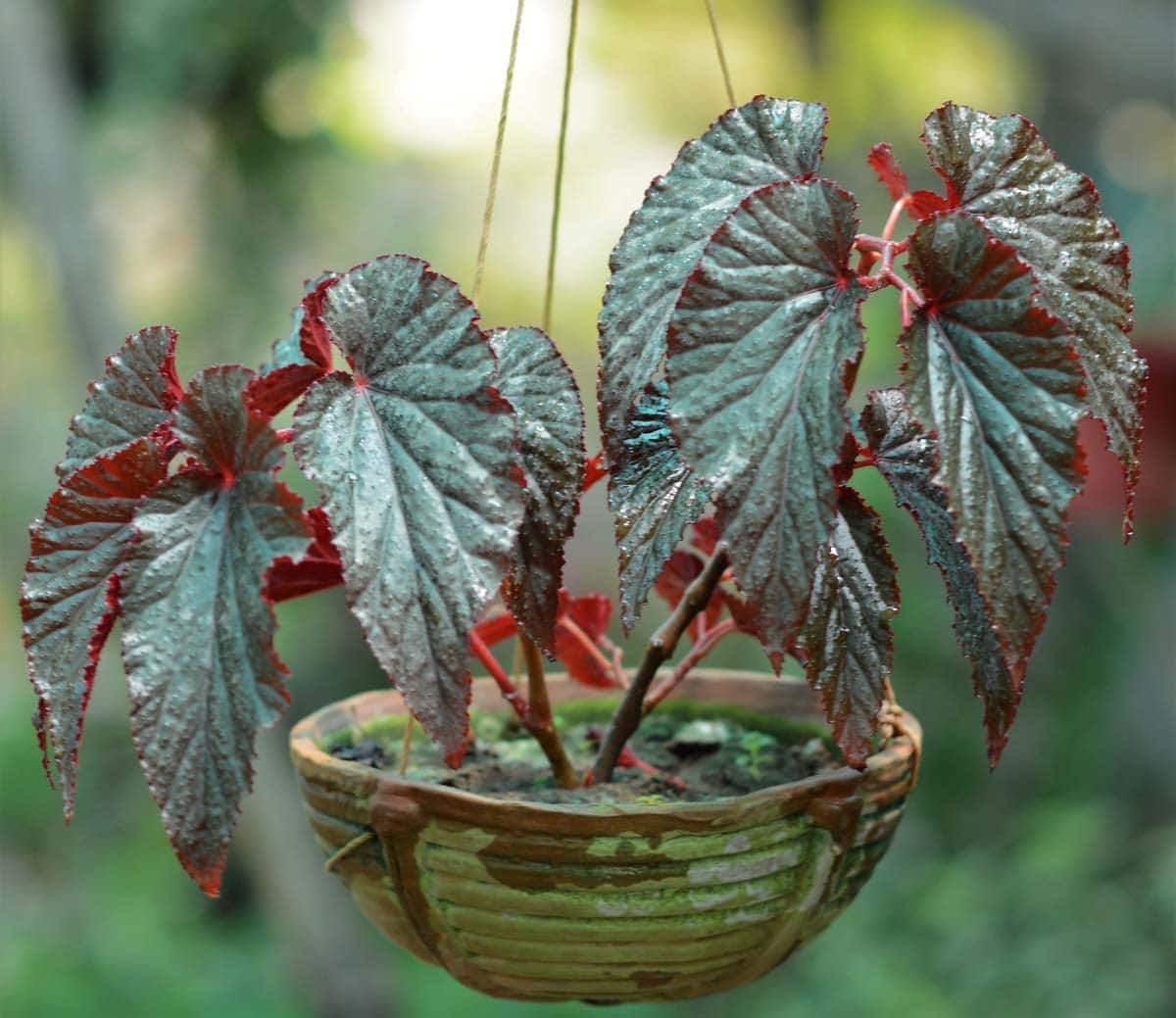
This is one of the easiest Begonia varieties to grow, second only to the wax Begonia. This low water plant has an upright growth habit reaching between 12 to 30 inches (30.4 to 76.2 cm) tall and 12 to 24 inches (30.4 to 60.6 cm) wide. The foliage is green with dots of white and reddish undersides. The blooms are impressive and appear in summer and early fall in colors of pink, red, white, or orange. Larger plants grown in pots need to be staked for support.
Water your Angel Wing Begonia when the top 1 inch of soil feels dry. This plant may require more water than other low water plants but is still very easy to care for. When you do water, water thoroughly and allow the soil to drain into the drip tray. Dispose of excess water to avoid root rot.
Grow your plant in potting soil with some organic matter, such as compost. Avoid using a very light potting soil as the heavy plant benefits from some soil support. Use an unglazed terra cotta or clay pot to allow for water wicking. Feed your plant once per week with a liquid fertilizer diluted to ¼ strength.
Low water plants take the pressure off houseplant lovers who have struggled in the past to keep up with demanding watering schedules. Whether you choose to stick entirely to drought tolerant plants, or just include them in your varied collection, caring for these hardy plants is often much easier than other plant varieties. To make houseplant care even easier, consider investing in self-watering pots.
Low Water Plants FAQ
While different varieties of plants have different sunlight requirements, providing bright, indirect sunlight will often be suitable. Start your plant out in a sunny room, but away from direct sunlight, and monitor its progress. Adjustments can be made if the plant is slowing signs of too much or too little exposure.
Some houseplants are more sensitive to chemicals in tap water than others. When possible, letting your tap water sit for 24 hours before use allows chemicals, such as chlorine, to dissipate. Using distilled or filtered water also helps for sensitive plants.
Yes, you should always use a pot with drainage holes for your houseplants. Most varieties of indoor plants are susceptible to root or stem rot if allowed to sit in soggy soil on a regular basis. Pots with drainage holes, and a drip tray placed underneath, let excess moisture escape.
Whenever possible, use an unglazed terra cotta or clay pot for low water plants. These materials naturally wick up excess soil moisture, which helps with root health. If you must use plastic, monitor soil moisture closely and ensure the pot has drainage holes.
Misting is a good way to increase moisture and humidity for some plant varieties, but not all houseplants respond well to moisture on their leaves. It is best to only mist when it is recommended for that particular plant, as standing water on foliage leads to leaf fungus in some varieties.

